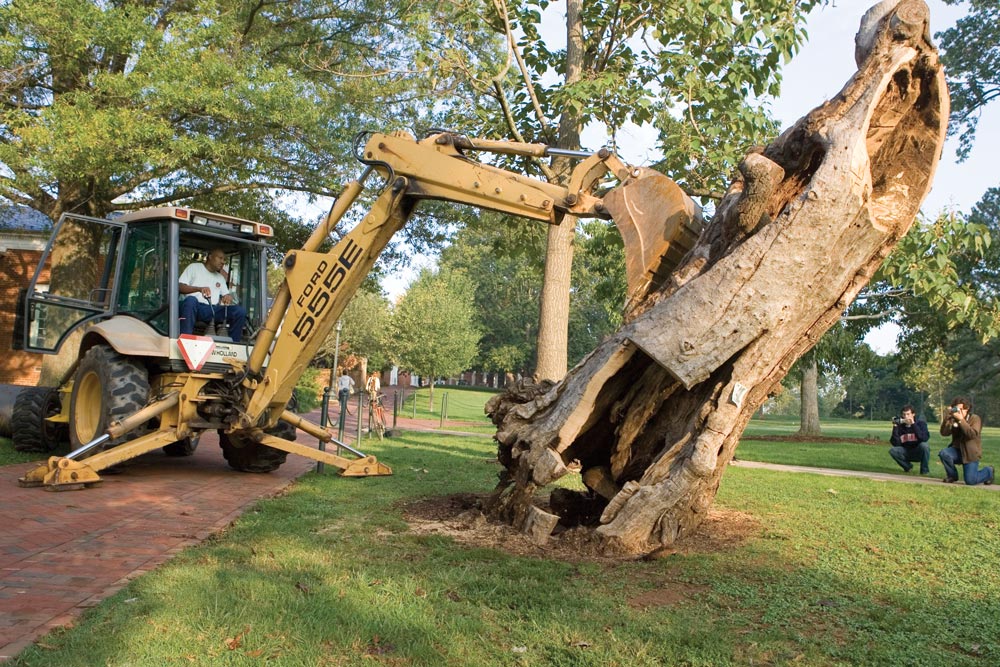Circle of Life
Dead tree recycled as art

The death of a paulownia tree, like the ancient one that stood near the East Range until early September, somehow doesn’t feel so tragic. The tree, indigenous to Asia, can provide nearly instant shade—some shoot up 20 feet in their first year—and features broad leaves and attractive blossoms. But the tree is also prized for its smooth, easily worked wood, often used for furniture and musical instruments. In Japan, it was customary to plant a paulownia upon the birth of a daughter, then harvest it to make a chest for her wedding gift.
Though the fate of the East Range tree isn’t quite so romantic, its wood will find new life as sculpture. Studio art professor William H. Bennett and his students rose early on the morning of Sept. 6 to claim pieces of the long-dead tree, whose leaning, hollow trunk was deemed hazardous.
The twisting, gnarled tree, just off the path that cuts between the Lawn and the Corner, was eye-catching. “We’re planning to knock down a tree that a lot of people thought looked like art,” Grounds Supervisor Richard M. Hopkins said before the felling. “Now pieces of the tree are going to continue on as art.”
Paulownia fans need not fret. In anticipation of the tree’s demise, a replacement was planted in 1987 near Washington Hall as a memorial to renowned Thomas Jefferson biographer Dumas Malone. Another stands near the east side of the Rotunda.